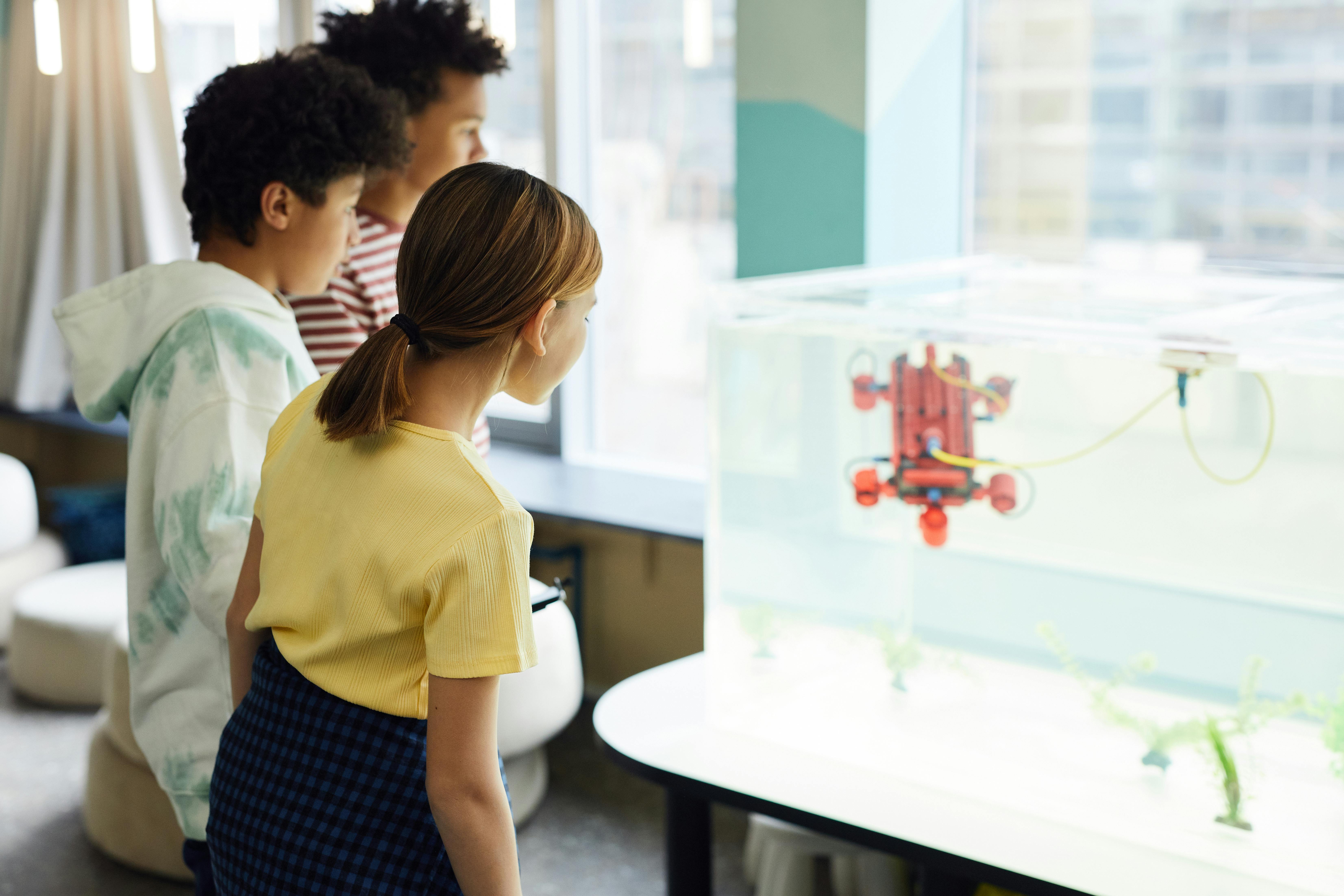
Test2: Harnessing the Power of Assessments for Professional Growth
When administered, 'Test2' evaluates an individual's or a group's performance in specific skills, subjects, or competencies. This assessment allows professionals to objectively measure an individual's knowledge, ability, or aptitude in a particular area. By analyzing the results, strengths can be identified, showcasing areas where the individual excels or possesses competence. These strengths could range from technical proficiencies to critical thinking skills, creativity, or effective communication.
On the contrary, 'Test2' is equally proficient in uncovering weaknesses. The assessment highlights areas where an individual may require additional support, skill development, or further training. This awareness is crucial for personal growth and improvement. Recognizing weaknesses can prompt individuals to seek out opportunities for self-improvement or professional enhancement to bridge knowledge gaps or skill deficiencies.
Moreover, when applied within organizational settings, 'Test2' offers valuable insights into employee performance and team dynamics. By pinpointing individual or team strengths, organizations can make informed decisions about job assignments, promotions, and collaborations. Recognizing and utilizing strengths maximizes productivity and fosters a positive work environment.
Similarly, acknowledging weaknesses assists employers in identifying areas where training programs can enhance employee skill sets. Addressing these weaknesses effectively allows organizations to optimize performance levels across different functions or departments. Comprehensive understanding of both strengths and weaknesses strengthens overall team performance by leveraging each member's talents while offering support for growth areas.
Furthermore, 'Test2' not only highlights individual capabilities but also provides a holistic view of strengths and weaknesses within educational systems. It helps identify curriculum gaps, gives valuable feedback about teaching methodologies, and helps educators tailor their instructions according to students' needs. Institutions can use this data to shape educational programs that align better with students' requirements and foster a conducive learning environment.
In conclusion, 'Test2' holds a crucial role in identifying strengths and weaknesses across various contexts. It empowers individuals by encouraging self-improvement, while also assisting organizations and educational institutions in making informed decisions to optimize performance and enhance learning outcomes.
 How to Create an Effective Study Plan Based on 'Test2' ResultsCreating an effective study plan based on your 'test2' results is essential for improving your performance. In order to do so, you need to analyze your previous test to identify where you went wrong and areas that require improvement. Once you have this information:
How to Create an Effective Study Plan Based on 'Test2' ResultsCreating an effective study plan based on your 'test2' results is essential for improving your performance. In order to do so, you need to analyze your previous test to identify where you went wrong and areas that require improvement. Once you have this information:1. Focus on weak areas: Concentrate your efforts on the topics or sections in which you performed poorly during 'Test2.' These weak areas demand additional attention and revision.
2. Set realistic goals: Establish specific and achievable goals that align with the topics you need to improve in. Make sure these goals are reachable within a reasonable timeframe.
3. Break it down: Divide your study plan into small, manageable sessions tailored to each goal. Shorter, focused study sessions can enhance comprehension and retention as compared to long, exhaustive study marathons.
4. Prioritize subjects and concepts: Organize your study plan by prioritizing subjects or concepts that hold more weightage or those which pose greater challenges. Spend more time on these critical topics and dedicate enough resources to reinforce understanding.
5. Utilize different resources: Experiment with various study materials such as textbooks, online resources, videos, or even seeking guidance from teachers or peers. Combining different sources provides diverse perspectives and aids in better comprehension.
6. Incorporate active learning strategies: Engage actively with the material rather than passively reading or reviewing it. Techniques like summarizing key points after each study session or teaching the content to someone else using your own words can solidify your knowledge.
7. Practice through repetitions: Repetition is vital for reinforcing what you've learned. Practice past test questions, solve sample papers that focus on the weak areas identified in Test2 results to gain confidence and improve proficiency gradually.
8. Create a plan for regular review sessions: Committing time for regular review sessions helps prevent forgetting previously learned material while enhancing long-term retention.
9. Improve time management skills: Efficiently manage your study time by creating a schedule or using techniques such as the Pomodoro Technique (alternating study and break intervals) to maintain focus and productivity.
10. Personalize study techniques: Experiment with different learning styles and strategies that work best for you. Identify whether visual aids, auditory methods, or mnemonic devices suit your retention and incorporate them into your plan.
11. Seek help when needed: Don't hesitate to reach out to teachers, tutors, or classmates for clarification whenever you encounter obstacles or have any doubts.
12. Take care of your overall well-being: Remember to incorporate breaks, exercise, and proper sleep into your daily routine. Taking care of yourself mentally and physically enhances concentration and absorption of knowledge.
13. Reflect on progress: Review your study plan periodically to assess its effectiveness. If certain methods or goals don't yield desired results, don't hesitate to adapt and modify your plan accordingly.
14. Stay committed and motivated: Stay focused and motivated throughout the process by establishing a positive mindset and setting achievable milestones. Celebrate your small victories along the way to keep yourself motivated and encouraged.
Creating a study plan based on 'Test2' results allows you to pinpoint weaknesses, efficiently allocate time to improve those areas, and apply effective study methods systematically. Consistency, dedication, and flexibility are key factors in creating an effective study plan for long-term success.
 The Psychological Benefits of Regular Testing with 'Test2'Regular testing with 'test2' has been shown to provide a range of psychological benefits that can positively impact individuals. One major benefit is the reduction of test anxiety. By engaging in regular testing, individuals become familiar with the process and develop confidence in their ability to perform well. This helps alleviate the fear and nervousness commonly associated with exams, enabling them to remain calm and focused during high-pressure situations.
The Psychological Benefits of Regular Testing with 'Test2'Regular testing with 'test2' has been shown to provide a range of psychological benefits that can positively impact individuals. One major benefit is the reduction of test anxiety. By engaging in regular testing, individuals become familiar with the process and develop confidence in their ability to perform well. This helps alleviate the fear and nervousness commonly associated with exams, enabling them to remain calm and focused during high-pressure situations.In addition, regular testing with 'Test2' promotes effective learning and retention of information. Testing enhances memory consolidation, strengthening the connections between neural networks associated with the tested material. It also aids in identifying areas of weakness, prompting targeted review and reinforcement of those specific concepts. As a result, individuals are better equipped to retain knowledge in the long term.
Moreover, regular testing enhances metacognition, which refers to the ability to understand and regulate one's own thinking and learning processes. Through testing, individuals gain insights into their own cognitive strengths and weaknesses. By analyzing their performance on 'Test2', they can identify successful study strategies or revise ineffective ones. This metacognitive awareness empowers learners to make informed decisions about their study methods and adapt them accordingly.
Regular testing also fosters a competitive spirit within individuals. The desire to excel and earn higher scores can motivate them to be more committed and dedicated to their studies. This healthy competition not only boosts motivation but also encourages students to set higher goals for themselves. This sense of achievement can contribute positively to their overall self-esteem and confidence levels.
Furthermore, regular testing helps in developing time management skills as it requires individuals to effectively allocate their time for revisions and practice sessions leading up to each test. As individuals become accustomed to this structured approach, they learn how to balance their study time effectively, preventing procrastination and promoting better productivity.
Lastly, regular testing provides valuable feedback on performance levels. Studying for a test without adequate feedback might impair accurate self-evaluation of one's comprehension abilities. By providing a measurable outcome, 'Test2' allows individuals to gauge their progress objectively, giving them a clear idea of their strengths and areas needing improvement. Constructive feedback inspires growth and enables learners to make necessary adjustments to their study plans for future tests.
Overall, the psychological benefits of regular testing with 'Test2' include reducing test anxiety, enhancing learning and memory retention, promoting metacognition, fostering competitiveness, developing time management skills, and providing valuable performance feedback. Embracing this testing approach can revolutionize how individuals perceive tests and ultimately contribute to their academic success and personal development.
 Strategies for Reducing Anxiety Before Taking 'Test2' AssessmentsStrategies for Reducing Anxiety Before Taking 'test2' Assessments
Strategies for Reducing Anxiety Before Taking 'Test2' AssessmentsStrategies for Reducing Anxiety Before Taking 'test2' AssessmentsTest anxiety is a common experience for many students, but there are several effective techniques that can help reduce anxiety levels before taking 'Test2' assessments. By implementing these strategies, individuals can boost their confidence and optimize their performance. Here are some helpful tips:
Postponing worries: Prior to the test, it's crucial to establish a designated time to address any anxiety-provoking thoughts or concerns. By reserving a specific period for worrying, such as 15 minutes at the end of the day, you can minimize anxious thoughts throughout the day and allow yourself to focus on test preparation.
Setting realistic expectations: It's important to recognize that no one is perfect, and it is unrealistic to expect yourself to score perfectly on every 'Test2' assessment. Embrace the fact that making mistakes is a natural part of the learning process and try to shift your mindset towards personal growth rather than attaining perfection.
Developing effective study habits: Effective studying can significantly reduce test anxiety. Analyze your study techniques and determine what works best for you individually. Create a structured study plan that allows sufficient time for reviewing materials, practicing sample questions, and organizing study groups with classmates if beneficial.
Engaging in regular exercise: Physical activity has been proven to reduce stress levels by triggering the release of endorphins in the brain. Prioritize regular exercise sessions, whether it's going for a jog, dancing, yoga, or participating in team sports. Incorporating physical activity into your routine will improve your mood and overall well-being.
Prioritizing relaxation techniques: Practicing relaxation techniques can help alleviate anxiety. Deep breathing exercises, progressive muscle relaxation, mindfulness meditation, or guided imagery are all effective approaches for promoting a sense of calmness and tranquility.
Ensuring adequate sleep: A good night's sleep is vital for cognitive functioning and managing stress levels. Establish a consistent sleep schedule leading up to the 'Test2' assessment, ensuring you allocate enough time for seven to nine hours of quality sleep each night. Avoid stimulants like caffeine or electronic devices before bedtime to enhance sleep quality.
Utilizing positive self-talk: Monitor your inner dialogue and replace any negative, self-critical thoughts with positive affirmations. Instead of dwelling on worries, repeat phrases such as "I am prepared," "I can handle this challenge," or "I will remain focused and calm." This helps cultivate a confident mindset and provides reassurance before the assessment.
Engaging in hobbies and relaxation activities: Make time for hobbies or activities you enjoy outside of studying. Engaging in enjoyable pastimes helps redirect your focus away from test-related stressors, allowing you to relax and recharge.
Seeking social support: Share your concerns with a trusted friend, family member, or mentor who can offer guidance and support during this stressful period. Not only can they listen to you vent, but their encouragement and perspective might help alleviate anxiety.
Taking breaks and treating yourself: During study sessions, taking regular breaks is crucial for maintaining focus and preventing burnout. Use these intervals to reward yourself with small treats or engage in activities that boost your mood, such as listening to music, watching a funny video, or grabbing a healthy snack.
By implementing these strategies consistently and adapting them according to your individual needs, you can reduce anxiety levels significantly before taking 'Test2' assessments. With less stress weighing you down, you'll have an improved chance of performing at your best on test day. Remember, preparing both physically and mentally is key to success!
 Innovative Ways Educators Can Use 'Test2' to Enhance Learning OutcomesInnovative Ways Educators Can Use 'test2' to Enhance Learning Outcomes
Innovative Ways Educators Can Use 'Test2' to Enhance Learning OutcomesInnovative Ways Educators Can Use 'test2' to Enhance Learning OutcomesUsing 'Test2' as an educational tool can bring a range of benefits that contribute to enhanced learning outcomes for students. Educators can explore various innovative approaches to integrate 'Test2' into their teaching methods to create an engaging and productive learning environment. Here are a few effective strategies:
1. Real-time assessments: With 'Test2,' educators can administer quizzes and tests in a real-time setting, allowing for instant feedback and immediate identification of areas requiring improvement. This enables timely intervention, personalized guidance, and accelerated progress.
2. Gamified learning: Leveraging the features of 'Test2,' educators can gamify the learning experience, making it fun and interactive for students. Incorporating elements like points, levels, badges, leaderboards, and other rewards can motivate learners to participate actively and strive for better results.
3. Collaborative learning: 'Test2' can serve as a collaboration tool by incorporating group activities and projects. Educators can design quizzes that require teamwork, communication, and problem-solving skills. Such collaborative efforts foster peer-to-peer learning and encourage students to collectively succeed.
4. Personalized adaptive testing: One of the key aspects of 'Test2' is its ability to adapt based on the learner's performance. Utilizing this feature, educators can provide tailored assessments that suit each student's level of comprehension. By accommodating individual needs and pacing, educators maximize learning potential.
5. Formative assessments: Rather than relying solely on end-of-semester exams, instructors can use 'Test2' more frequently to conduct formative assessments. These short quizzes help identify knowledge gaps early on, allowing educators to adjust instructional strategies promptly before students fall too far behind.
6. Analyzing progress data: With 'Test2,' educators gain access to detailed analytics on each student's performance, enabling them to gain insights into strengths, weaknesses, and overall progress. This data can aid in identifying patterns and trends and help guide instructional decisions for improved learning outcomes.
7. Interactive multimedia content: 'Test2' can support the integration of different types of multimedia, such as images, videos, and interactive elements, into assessments. Incorporating multimedia content enhances student engagement, stimulates visual and auditory learners, and encourages a deeper understanding of the subject matter.
8. Instant grading: The automated grading feature provided by 'Test2' saves educators time and effort in evaluating student answers. It allows for fast turnaround on assessments, providing students with immediate feedback to facilitate continuous improvement.
9. Preparing students for future exams: By aligning 'Test2' assessments with standardized tests or specific coursework exams, educators can familiarize students with the format and requirements they will encounter later. Regular practice using similar questions can boost students' confidence and get them accustomed to exam conditions.
10. Self-paced learning: Flexibility is another advantage of using 'Test2.' Educators can create self-paced assessments where students have the freedom to work on assignments at their own speed. This style cultivates independent learning skills while accommodating various learning preferences.
Incorporating 'Test2' effectively into educational practices enables a dynamic learning ecosystem, where teachers can efficiently track progress, address individual needs, and provide comprehensive support for students. Its interactive features coupled with innovative teaching approaches redefine how teachers engage with learners towards achieving optimum learning outcomes.
 The Impact of 'Test2' on Long-Term Career PlanningThe Impact of 'test2' on Long-Term Career Planning
The Impact of 'Test2' on Long-Term Career PlanningThe Impact of 'test2' on Long-Term Career PlanningLong-term career planning plays a crucial role in shaping one's professional journey. A significant aspect that influences effective career planning is the ability to assess and measure individual skills, knowledge, and aptitude. 'Test2' is a tool that serves as a valuable resource in this regard by providing essential insights into various areas essential for long-term career planning.
'Test2' has proved valuable in the identification and evaluation of an individual's strengths, weaknesses, and areas for improvement. Through its comprehensive assessment framework, it effectively evaluates different skill sets such as analytical thinking, problem-solving abilities, decision-making capabilities, communication skills, and leadership potential. By understanding these competencies, individuals can gain awareness about their natural talents and tendencies, enabling them to make informed decisions about their long-term career goals.
Furthermore, the utilization of 'Test2' aids in clarifying interests and passions for individuals exploring different career paths. Its test models help individuals discover hidden talents or interests they may not have previously considered or explored. Armed with this newfound clarity of interests, one can align their choices in favor of careers that resonate with their true passions.
'Test2' provides valuable information pertaining to personality traits that are relevant in long-term career development. Insights gained from 'Test2' can help individuals identify personality characteristics such as adaptability, resilience, creativity, and teamwork ability. These understandings allow individuals to assess whether their desired career path suits their personality type or if they need to alter their approach to achieve satisfaction and success.
Moreover, 'Test2' impacts long-term career planning by helping professionals recognize potential gaps in their education or training. The results highlight domains in which skill enhancement or further education could be beneficial; consequently guiding individuals to pursue appropriate certifications or degrees necessary for their desired career trajectory.
'Test2' often measures an individual's industry-specific knowledge or expertise necessary for specific sectors. Through comprehensive evaluations, it identifies skill gaps and areas that require focus. Armed with this knowledge, individuals can undertake relevant training programs, professional development opportunities or internships to align their skills with industry demands or to reconnect with changing industry trends.
Finally, 'Test2' plays an indispensable role in assisting individuals in setting achievable and realistic goals within a chosen career path. By assessing an individual's current skills and competencies, it enables the identification of short-term objectives to bridge any skill gaps while gradually working towards long-term aspirations.
In conclusion, the impact of 'Test2' on long-term career planning is considerable. The tool aids individuals in assessing their strengths and weaknesses, clarifying interests and passions, understanding personality traits relevant for career success, identifying potential skill gaps, acquiring industry-specific knowledge, and setting realistic goals. Overall, 'Test2' contributes to informed decision-making during long-term career planning, helping individuals navigate a fulfilling and successful professional journey.
 Utilizing 'Test2' for Effective Team Building in the WorkplaceUtilizing 'test2' for Effective Team Building in the Workplace
Utilizing 'Test2' for Effective Team Building in the WorkplaceUtilizing 'test2' for Effective Team Building in the WorkplaceIn today's dynamic work environment, effective teamwork is vital for an organization's success. Building a strong and cohesive team can improve productivity, increase employee satisfaction, and lead to better outcomes. One valuable tool for achieving this is utilizing the concept of 'Test2'. Let's explore how this approach can be applied for effective team building in the workplace.
'Test2' is a framework designed to enhance team communication, collaboration, and problem-solving skills. By implementing 'Test2,' employees can develop a better understanding of their roles within the team, foster trust and respect among coworkers, and establish an environment conducive to open communication. Here are some key aspects to consider when using 'Test2' for team building:
1. Encouraging Active Participation: 'Test2' emphasizes that active participation should be encouraged from all team members. This involves giving everyone an opportunity to contribute ideas, share insights, and voice their opinions during discussions or decision-making processes. When every team member feels valued and heard, they are more likely to actively engage and contribute towards the team's goals.
2. Promoting Diversity and Inclusion: Inclusive team dynamics are crucial for effective collaboration. Implementing 'Test2' means recognizing and valuing diversity within the team – diverse backgrounds, perspectives, strengths, and weaknesses. Embracing these differences fosters creativity, innovation, and a range of problem-solving approaches that benefit the entire team.
3. Establishing Clear Goals: Clear goals are essential to guide team efforts effectively. When implementing 'Test2,' it is crucial to define specific, measurable, achievable, relevant, and time-bound (SMART) goals collaboratively. This process ensures that all team members are aligned with the objectives and understand their individual responsibilities towards achieving these goals.
4. Facilitating Regular Communication: Communication is the cornerstone of effective teamwork. With 'Test2', emphasis is placed on maintaining open channels of communication among team members. Encourage transparent and timely communication through regular team meetings, updates, and feedback sessions. This practice nurtures trust, reduces misunderstandings, and improves overall collaboration.
5. Building Trust and Respect: Trust and respect are essential for any successful team. Implementing 'Test2' involves promoting an environment where everyone feels safe to express opinions, ask questions, and offer constructive criticism without fear of judgment or reprisal. Building trust facilitates better rapport between team members, creating a positive work atmosphere.
6. Nurturing Collaboration and Delegation: Within a team, collaboration ensures the sharing of knowledge, resources, and workload. Implementing 'Test2' requires fostering a collaborative mindset by encouraging cooperative problem-solving, active listening, and empathy towards colleagues. Additionally, effective delegation enables the division of tasks based on individual strengths and skills to ensure efficient completion.
7. Supporting Professional Growth: A supportive environment for learning and growth is an integral part of 'Test2'. Encourage individual development by offering opportunities for training, mentoring relationships, or cross-functional projects that allow team members to expand their skills and knowledge. This helps create a more dynamic and versatile team that can adapt to changing workplace requirements.
In conclusion, to cultivate effective team building in the workplace with the help of 'Test2', companies should focus on encouraging active participation, promoting diversity and inclusion, setting clear goals, facilitating regular communication, building trust and respect among team members, nurturing collaboration and delegation, as well as supporting professional growth. By prioritizing these elements within a 'Test2' framework, organizations can foster an inclusive and highly productive team environment for the benefit of all employees and overall organizational success.
 Case Studies: Success Stories from Individuals Who Leveled Up With 'Test2'A case study is a research method used in various fields, including marketing, psychology, social sciences, and education, to analyze and highlight real-life success stories or specific experiences of individuals or groups. These studies provide an in-depth investigation of certain phenomena or incidents and can be immensely helpful in describing and understanding the benefits and impacts of 'test2' on personal development and growth.
Case Studies: Success Stories from Individuals Who Leveled Up With 'Test2'A case study is a research method used in various fields, including marketing, psychology, social sciences, and education, to analyze and highlight real-life success stories or specific experiences of individuals or groups. These studies provide an in-depth investigation of certain phenomena or incidents and can be immensely helpful in describing and understanding the benefits and impacts of 'test2' on personal development and growth.In this blog post, we will discuss several case studies that illustrate how individuals have elevated their skills and improved their lives with the help of 'test2.' These stories demonstrate the practical applications and transformative aspects of utilizing 'test2.'
One inspiring success story features Amy, a working professional who wanted to enhance her leadership skills to pursue higher positions within her organization. With 'test2,' she took advantage of various online courses tailored for leadership development. Through continuous learning and skill-building exercises provided by 'test2,' Amy gradually developed effective communication techniques, better decision-making abilities, and stronger problem-solving skills. Empowered with her newfound expertise, Amy successfully obtained a promotion and secured her dream role as a team leader at work.
Another fascinating case study revolves around James, an entrepreneur on a mission to launch his own startup business. Facing several challenges like limited resources and fierce competition, James turned to 'test2' to gain knowledge about entrepreneurship and acquire valuable tools for scaling up his venture. The platform offered practical business courses taught by experienced entrepreneurs who shared their journeys and insights. By skillfully applying the learnings from 'test2,' James strategically improved his marketing strategies, refined his target audience, and streamlined his operations. As a result, James saw significant growth in his startup's customer base and revenue, leading him to garner recognition as an emerging player in the industry.
Similarly, Sarah's story showcases how 'test2' benefited someone looking to switch careers entirely. Sarah had always dreamed of working in the field of digital marketing but lacked relevant experience. Utilizing 'test2's vast selection of courses on digital marketing, Sarah immersed herself in comprehensive modules covering topics such as social media marketing, content creation, and search engine optimization. Armed with this knowledge and fueled by her passion, she secured an internship at a reputable marketing agency within six months. This experience provided Sarah with invaluable hands-on learning opportunities, paving the way for a long-lasting career in her desired field.
In addition to these case studies, countless other individuals have credited 'test2' for their professional advancements and personal growth. From mastering new programming languages to honing creative skills or learning foreign languages, the platform has fostered success and self-improvement in diverse domains.
These stories illustrate how 'test2' serves as a catalyst for empowering individuals in their pursuit of personal and professional growth. Through its vast array of courses and interactive learning resources, 'test2' equips individuals with the necessary skills, knowledge, and confidence to overcome challenges, seize opportunities, and level up in their respective fields. With a commitment to lifelong learning, 'test2' empowers aspirational individuals to unlock their full potential and achieve remarkable success.
 Exploring the Latest Features of 'Test2': What’s New in Assessment Technology?Exploring the Latest Features of 'test2': What's New in Assessment Technology?
Exploring the Latest Features of 'Test2': What’s New in Assessment Technology?Exploring the Latest Features of 'test2': What's New in Assessment Technology?In the ever-evolving world of education and assessment, staying up to date with the latest advancements is crucial. One such advancement that has gained recognition is 'Test2', a cutting-edge assessment technology. From enhanced question types to improved user interfaces, 'Test2' offers several remarkable features that are revolutionizing the way assessments are conducted. Let's delve into some of these features and understand what makes 'Test2' so noteworthy.
1. Diverse Question Types: 'Test2' provides educators with a wide range of question types to effectively gauge students' understanding. In addition to the traditional multiple-choice questions, the platform also includes features such as short answer, fill in the blank, true or false, and even advanced question types like matching, graphs, and simulations.
2. Personalized Assessments: With 'Test2', educators can create personalized assessments tailored to their students' needs. Through customizable parameters for test length, difficulty levels, and learning objectives, teachers can construct exams that comprehensively evaluate each student's individual progress and knowledge.
3. Real-time Feedback: Testing doesn't have to be a one-way street anymore. 'Test2' embraces an interactive approach by providing real-time feedback. As soon as students complete their assessments, they receive immediate feedback highlighting their strengths and areas for improvement, allowing them to reflect on their performance and make necessary enhancements.
4. Accessibility Features: Addressing the need for inclusivity, 'Test2' incorporates accessibility features for students with special needs. The technology supports diverse accommodations such as text-to-speech functionality and adjustable font sizes to ensure a level playing field for all students.
5. Enhanced Security: Reliable assessment technology must prioritize security to preserve the integrity of examinations. 'Test2' takes security seriously by employing robust measures like secure browser settings that prevent cheating, randomized question orders at an individual level, and automated plagiarism detection systems to deliver reliable and trustworthy assessments.
6. Advanced Analytics: 'Test2' provides teachers with comprehensive analytics to gain valuable insights into students' performance. These analytics offer detailed reports on individual student progress, class performance summaries, item analysis, and even comparative data across classes or school administrators - equipping educators with the tools needed to develop targeted instructional strategies.
7. Seamless Integration: Integration with learning management systems (LMS) is key for modern assessment technologies. 'Test2' recognizes this and allows seamless integration with existing LMS platforms, providing a streamlined experience for both instructors and students.
As society moves towards digital learning experiences, exploring the array of assessment technology options becomes essential for educators. Through features like diverse question types, personalized assessments, real-time feedback, accessibility accommodations, enhanced security measures, advanced analytics, and integration capabilities with LMS platforms, 'Test2' emerges as an enticing solution that facilitates more efficient and effective assessments. With its innovative approach, 'Test2' is undoubtedly shaping the future of assessment technology in education.
 Overcoming Obstacles: How to Bounce Back After a Disappointing 'Test2' ResultOvercoming Obstacles: How to Bounce Back After a Disappointing "test2" Result
Overcoming Obstacles: How to Bounce Back After a Disappointing 'Test2' ResultOvercoming Obstacles: How to Bounce Back After a Disappointing "test2" ResultExperiencing disappointment after a less-than-satisfactory test result can be disheartening and discouraging. However, it's important to remember that setbacks are a natural part of the learning process. It's how you choose to respond and bounce back from these disappointments that truly defines your determination and resilience. In this blog post, we will explore some effective strategies for overcoming obstacles and turning a disappointing "Test2" result into a stepping stone towards future success.
Acknowledge Your Emotions:
The first step in overcoming any obstacle is acknowledging the emotions you may be feeling after a disappointing outcome. It's completely normal to feel frustrated, upset, or even discouraged. Allow yourself to experience those emotions, but also make a conscious effort not to dwell on them for too long. Accepting and understanding your feelings will pave the way for productive actions.
Analyze Your Mistakes:
To move forward, it's essential to analyze your mistakes objectively. Take some time to review your test with a critical eye, focusing on areas where you struggled the most. Identify any patterns or recurring mistakes that you made. Was it due to lack of preparation, poor time management, or difficulty grasping certain concepts? Pinpointing your weaknesses will give you direction in terms of what needs improvement.
Create an Action Plan:
With a clearer understanding of your mistakes and weak spots, it is crucial to create an action plan. Break down the necessary steps you need to take to address those areas for improvement. Prioritize these steps based on their significance and feasibility. For example, you might dedicate extra study time for specific topics or seek assistance from teachers, tutors, or classmates who excel in those subjects.
Utilize Available Resources:
Don't be afraid to ask for help when needed. Reach out to teachers, classmates, or online resources that can provide additional support and guidance. Utilize study guides, practice materials, or online communities centered around the topics you struggled with. Remember, overcoming obstacles is often a collaborative effort, and seeking help shows strength and initiative for personal growth.
Set Realistic Goals:
As you work on addressing your weaknesses and improving your study habits, it's essential to set realistic goals. Break down your larger objectives into smaller milestones that are measurable and attainable. By setting manageable goals, you can track and celebrate your progress along the way. This process helps maintain motivation and reminds you of how far you've come since that disappointing "Test2" result.
Adopt a Growth Mindset:
One of the most powerful ways to overcome obstacles is by adopting a growth mindset. Instead of viewing setbacks as failures, reframe them as opportunities for growth and learning. Embrace the idea that intelligence and abilities can be developed through dedication and hard work. Replace self-limiting beliefs with positive affirmations that encourage continuous improvement.
Stay Persistent:
Success rarely comes overnight. It requires persistence even in the face of adversity. Avoid becoming discouraged by setbacks or plateaus along your academic journey. Keep pushing forward, armed with a belief in your ability to rebound from disappointments. Remember that failure is not necessarily permanent – it serves as a valuable stepping stone on the path to success.
In conclusion, overcoming obstacles and bouncing back from a disappointing "Test2" result requires emotional resilience, proactive self-analysis, planning, seeking help from resources around you, setting realistic goals, fostering a growth mindset, and maintaining persistence throughout the journey. By applying these strategies, you can transform setbacks into opportunities for personal growth and move closer to achieving the success you desire.
 The Future of Professional Development: Predictions and Trends Influenced by 'Test2'The future of professional development is evolving rapidly, and 'test2' is expected to play a significant role in shaping these changes. This blog explores the predictions and trends that are being influenced by the introduction and implementation of 'Test2' in various industries.
The Future of Professional Development: Predictions and Trends Influenced by 'Test2'The future of professional development is evolving rapidly, and 'test2' is expected to play a significant role in shaping these changes. This blog explores the predictions and trends that are being influenced by the introduction and implementation of 'Test2' in various industries.1. Personalized Learning: With the integration of 'Test2' into professional development programs, personalized learning opportunities are becoming more prevalent. Using data-driven analytics, organizations can assess the skills and knowledge gaps of their employees accurately. By tailoring learning experiences based on individual needs, professionals can acquire new skills efficiently and enhance their capabilities.
2. Blended Learning Approach: The rise of 'Test2' has pushed professional development programs towards adopting a blended learning approach. This model combines traditional classroom-based training with online platforms and tools. It allows professionals to access learning resources anytime, anywhere, fostering self-paced learning while still benefiting from structured instruction.
3. Microlearning and Bite-sized Content: 'Test2' has accelerated the trend towards microlearning, where content is broken down into bite-sized modules for quick consumption. In this fast-paced digital age, professionals often prefer short bursts of information rather than lengthy training sessions. Microlearning offers flexible and interactive formats like videos, podcasts, or infographics, allowing professionals to learn conveniently.
4. Gamification: The application of gaming elements and mechanics to learning processes has gained momentum thanks to 'Test2'. Gamification makes professional development more engaging and enjoyable by introducing challenges, competitions, leaderboards, and rewards systems. By incorporating game-like elements into training programs, 'Test2' promotes higher motivation and retention rates among professionals.
5. Virtual Reality (VR) and Augmented Reality (AR): 'Test2' has spurred advancements in VR and AR technologies that have significant implications for professional development. These immersive technologies enable realistic simulations, virtual mentoring sessions, and on-the-job training experiences without geographical limitations. Thus, professionals can acquire practical skills and gain hands-on experience in a safe and controlled environment through 'Test2'-enhanced training programs.
6. Data-driven Decision Making: The implementation of 'Test2' allows organizations to gather vast amounts of data regarding professional development programs. This data-rich environment opens new possibilities for evidence-based decision making, allowing both individuals and organizations to identify performance gaps, track progress, and assess the effectiveness of specific training strategies.
7. Collaborative Learning Communities: 'Test2' is expanding the concept of professional development beyond isolated individuals by promoting collaborative learning communities. Online platforms powered by 'Test2' facilitate knowledge sharing, discussion forums, and peer-to-peer interactions among professionals from various fields, enhancing collaboration and fostering a culture of expertise exchange.
In conclusion, the future of professional development influenced by 'Test2' is moving towards personalized and blended learning approaches. Microlearning, gamification, VR/AR experiences, and data-enabled decisions are becoming more prevalent. Furthermore, collaborative learning communities offer professionals opportunities for networking and sharing knowledge across diverse industries. Professionals should embrace these trends proactively to make the most of the evolving landscape of professional development in the digital age.
 Incorporating 'Test2' Assessments into Remote Learning and Working EnvironmentsRemote learning and working environments have become increasingly prevalent, especially with the recent global shift towards digital technologies. In this blog post, we will explore the importance of incorporating 'test2' assessments into these remote setups and discover how they can enhance the overall learning and working experience.
Incorporating 'Test2' Assessments into Remote Learning and Working EnvironmentsRemote learning and working environments have become increasingly prevalent, especially with the recent global shift towards digital technologies. In this blog post, we will explore the importance of incorporating 'test2' assessments into these remote setups and discover how they can enhance the overall learning and working experience.1. Understanding 'Test2' Assessments:
'Test2' assessments refer to a specific type of evaluation or examination method that is designed to test an individual's understanding, knowledge, and skills in relation to a specific subject or topic. These assessments can take various forms, including multiple-choice questions, essays, or practical tasks.
2. Adapting 'Test2' Assessments for Remote Use:
To incorporate 'Test2' assessments into remote learning and working environments, certain adaptations are required. Traditional face-to-face assessments are being redesigned to function effectively in online settings. This process entails selecting appropriate assessment methods that work well in a digital format.
3. Utilizing Technology for Assessments:
One of the key factors involved in incorporating 'Test2' assessments into remote setups is the utilization of technology. Various online tools and platforms offer features that enable educators and employers to efficiently create, distribute, and evaluate quizzes or tests digitally. Popular platforms include Google Forms, Moodle, Schoology, and Blackboard.
4. Flexibility in Timing and Scheduling:
A major advantage of 'Test2' assessments in remote learning and working environments is the flexibility they afford in terms of timing and scheduling. Unlike traditional exams with strict time constraints, digital assessments grant learners and workers greater autonomy to complete tasks within specified time frames suitable for their individual needs.
5. Increased Access for All:
Incorporating 'Test2' assessments into remote setups ensures increased access to evaluations for all participants. Students or remote workers residing in different time zones or in geographically distant locations gain the opportunity to complete assessment tasks conveniently without travel or accommodation arrangements.
6. Seamless Feedback and Grading:
Online tools used for 'Test2' assessment often have automated grading features, allowing for seamless feedback and the timely release of results. This real-time evaluation enhances transparency in the assessment process, enabling individuals to receive immediate feedback and make improvements if necessary.
7. Maintaining Academic Integrity:
Ensuring academic integrity during remote assessment is a crucial consideration. Institutions and employers adopt various strategies to minimize cheating behaviors, such as implementing advanced plagiarism detection tools or imposing time limits, randomized questions, and remote proctoring.
8. Supporting Collaboration and Interactive Assessments:
Remote learning and working environments can successfully incorporate collaborative forms of 'Test2' assessments. Group projects, case studies, or online discussions can be employed as evaluation tools, fostering collaboration and enabling employers or educators to assess individual contributions within a team setting.
9. Personalized Learning and Progress Monitoring:
Digital 'Test2' assessment methods allow for the collection and analysis of valuable data that can be used to monitor individual progress over time. In turn, this information enables educators or employers to provide personalized feedback and adapt instructional interventions according to each participant's needs.
In conclusion, incorporating 'Test2' assessments into remote learning and working environments brings numerous benefits. Leveraging appropriate technology, flexibility in scheduling, increased accessibility, seamless feedback mechanisms, academic integrity protocols, collaborative exercises, and personalized learning support all contribute to a comprehensive and efficient evaluation process for both students and workers in the digital era.
 Personalizing Your Learning Experience Through 'Test2' Feedback AnalysisWhen it comes to personalizing your learning experience, 'test2' Feedback Analysis provides a crucial tool for acquiring valuable insights and improving your skills. This analysis focuses on assessing your performance in the test and understanding your strengths, weaknesses, and areas that require improvement. Instead of relying solely on traditional feedback methods, 'Test2' Feedback Analysis offers a structured framework to evaluate your progress and tailor your learning journey accordingly.
Personalizing Your Learning Experience Through 'Test2' Feedback AnalysisWhen it comes to personalizing your learning experience, 'test2' Feedback Analysis provides a crucial tool for acquiring valuable insights and improving your skills. This analysis focuses on assessing your performance in the test and understanding your strengths, weaknesses, and areas that require improvement. Instead of relying solely on traditional feedback methods, 'Test2' Feedback Analysis offers a structured framework to evaluate your progress and tailor your learning journey accordingly.By analyzing the feedback received from 'Test2', you can gain a comprehensive understanding of your performance. The analysis delves into various aspects such as your accuracy, speed, critical thinking ability, problem-solving skills, and knowledge retention. Through this evaluation, you can identify trends in your performance, track your growth over time, and target specific areas that need attention.
One of the primary advantages of using 'Test2' Feedback Analysis is its ability to personalize your learning journey. With the detailed assessment provided, you can design a study plan specific to your needs, maximizing your potential for success. For example, if the analysis highlights a consistent weakness in a particular topic, you can allocate more time to revise and practice questions related to that subject matter. This targeted approach ensures that you address your knowledge gaps efficiently and break any learning barriers.
Additionally, the personalized insights generated by 'Test2' Feedback Analysis allow you to optimize your exam preparation strategy. By understanding the types of questions where you often make mistakes or struggle with time management, you can develop effective strategies to overcome these challenges. Whether it's employing specific techniques for answering certain question formats or practicing under timed conditions, you can enhance both your efficiency and accuracy during exams.
Another extraordinary feature of 'Test2' Feedback Analysis is its ability to provide motivation. Often, students can feel overwhelmed or discouraged by continuous study without tangible results. However, with this analysis method, you can visually see progress graphs and statistics that demonstrate an improvement in performance over time. Witnessing the fruits of your efforts is an excellent motivator to keep pushing forward and maintain your dedication to the learning process.
Moreover, 'Test2' Feedback Analysis promotes self-reflection and metacognition. By reviewing your performance, mistakes made, and areas of excellence, you develop a deeper awareness of your own learning style and preferences. This self-understanding allows you to optimize your learning experience further by adopting study techniques that align with your cognitive strengths. For instance, if visual aids aid your comprehension, you can integrate more diagrams or charts into your studying process.
In conclusion, personalizing your learning experience is highly beneficial for maximizing educational growth. Through the utilization of 'Test2' Feedback Analysis, you can gain important insights into your performance trends, pinpoint areas needing improvement, amplify exam preparation strategies, stay motivated, and engage in self-reflection. This feedback analysis tool serves as a valuable resource to tailor your studying methods and achieve optimal outcomes in your educational journey.
 Expert Tips on Maximizing the Benefits of 'Test2' for Career AdvancementExpert Tips on Maximizing the Benefits of 'test2' for Career Advancement
Expert Tips on Maximizing the Benefits of 'Test2' for Career AdvancementExpert Tips on Maximizing the Benefits of 'test2' for Career AdvancementWhen it comes to advancing your career, leveraging the benefits of 'Test2' can be a game-changer. This assessment tool offers valuable insights into your strengths, weaknesses, and areas for improvement, helping you make informed decisions and take strategic steps towards professional growth. Here are some expert tips on how to make the most out of 'Test2' for maximizing your career advancement:
1. Understand the Purpose: Before undertaking 'Test2,' grasp its purpose and objectives clearly. This assessment is designed to evaluate your skills, abilities, interests, and personality traits relevant to various professional domains. Having a solid understanding of what it aims to measure will give you valuable context while interpreting the results.
2. Analyze Test Results Thoroughly: Once you receive your 'Test2' results, invest time in analyzing them comprehensively. Pay attention to areas where you excel and those that need improvement. By identifying your strengths, you can find ways to capitalize on them, while focusing on areas for growth will enable targeted skill development.
3. Set Clear Goals: Armed with the information gathered from 'Test2,' establish clear career goals aligned with your strengths and interests. Whether it's aiming for a promotion, exploring a new industry, or acquiring specific skill sets, having well-defined objectives will help shape your career trajectory effectively.
4. Seek Professional Guidance: Consider seeking professional advice to assist you in interpreting and making sense of 'Test2' results. Career coaches or guidance counselors can provide valuable insights by relating your assessment findings with potential career paths or further education possibilities.
5. Identify Learning Opportunities: Leverage 'Test2' by identifying areas where you can enhance your knowledge or skills through targeted learning opportunities. These could include attending workshops, webinars, advanced training programs or pursuing higher education in specific fields.
6. Cultivate a Growth Mindset: Approach 'Test2' as a tool to foster a growth mindset. Embrace feedback and view any areas for improvement as opportunities to learn and grow. Adopting a positive attitude towards personal development will significantly contribute to your advancement prospects.
7. Network Strategically: Make use of the insights gained from 'Test2' to strategically build a strong professional network. Identify individuals or industry groups who share common interests with you and can offer guidance or mentorship in your career advancement journey.
8. Leverage Professional Development Programs: Many organizations offer professional development programs that align with 'Test2' and help employees nurture their talents. Explore these opportunities within your workplace or explore external programs, such as conferences or seminars, to continually enhance your skills and demonstrate your commitment to growth.
9. Regularly Review Your Progress: Periodically review your progress by comparing your 'Test2' results over time. Track how far you've advanced in achieving your goals and reflect on ways to further refine your approach.
10. Adapt and Evolve: Finally, remember that career advancement is an ever-evolving process influenced by numerous factors. Adaptability is key, so remain open to new opportunities, recalibrate your strategies when needed, and embrace change in order to continue progressing in line with your growing potential.
In conclusion, 'Test2' is an invaluable assessment tool that can be harnessed effectively for career advancement. By understanding its purpose, meticulously analyzing results, setting clear goals, seeking expert guidance, pursuing continuous learning, adopting a growth mindset, building strategic relationships, participating in professional development programs, reviewing progress periodically, and remaining adaptable- you can maximize the benefits of 'Test2' and make a profound impact on your professional journey.
